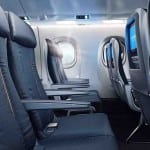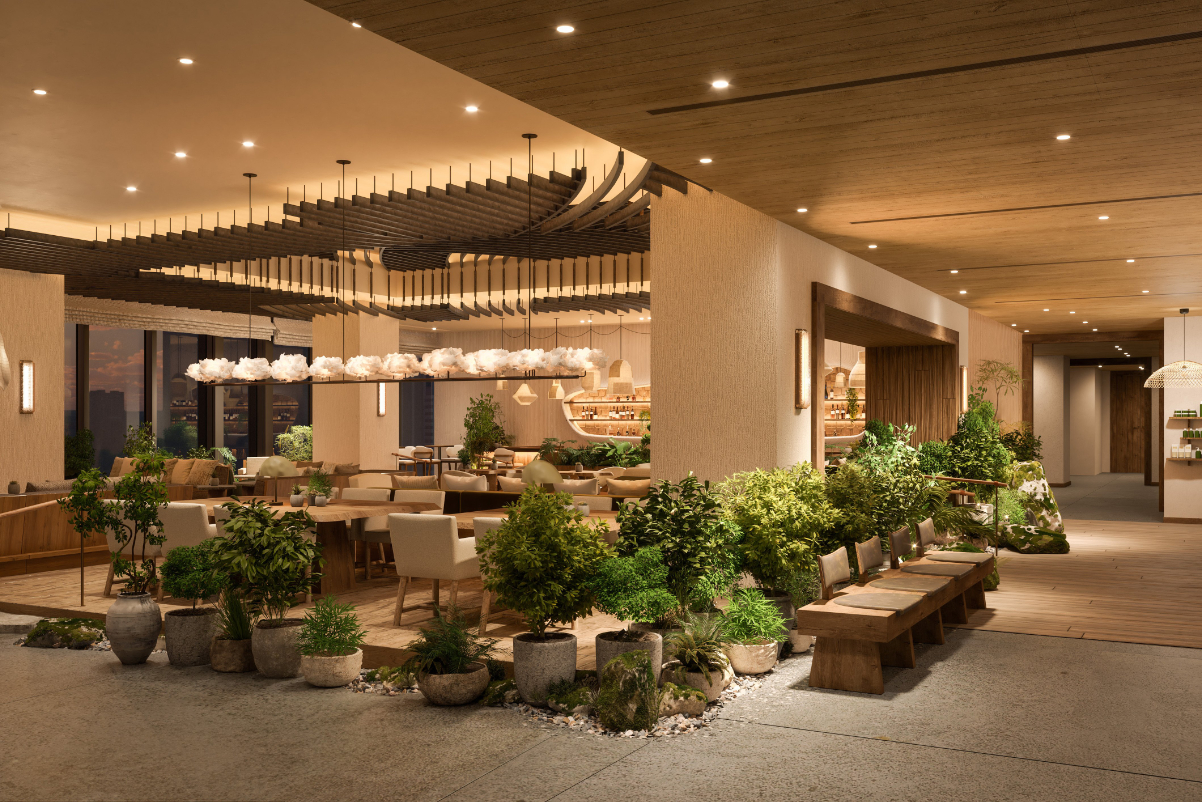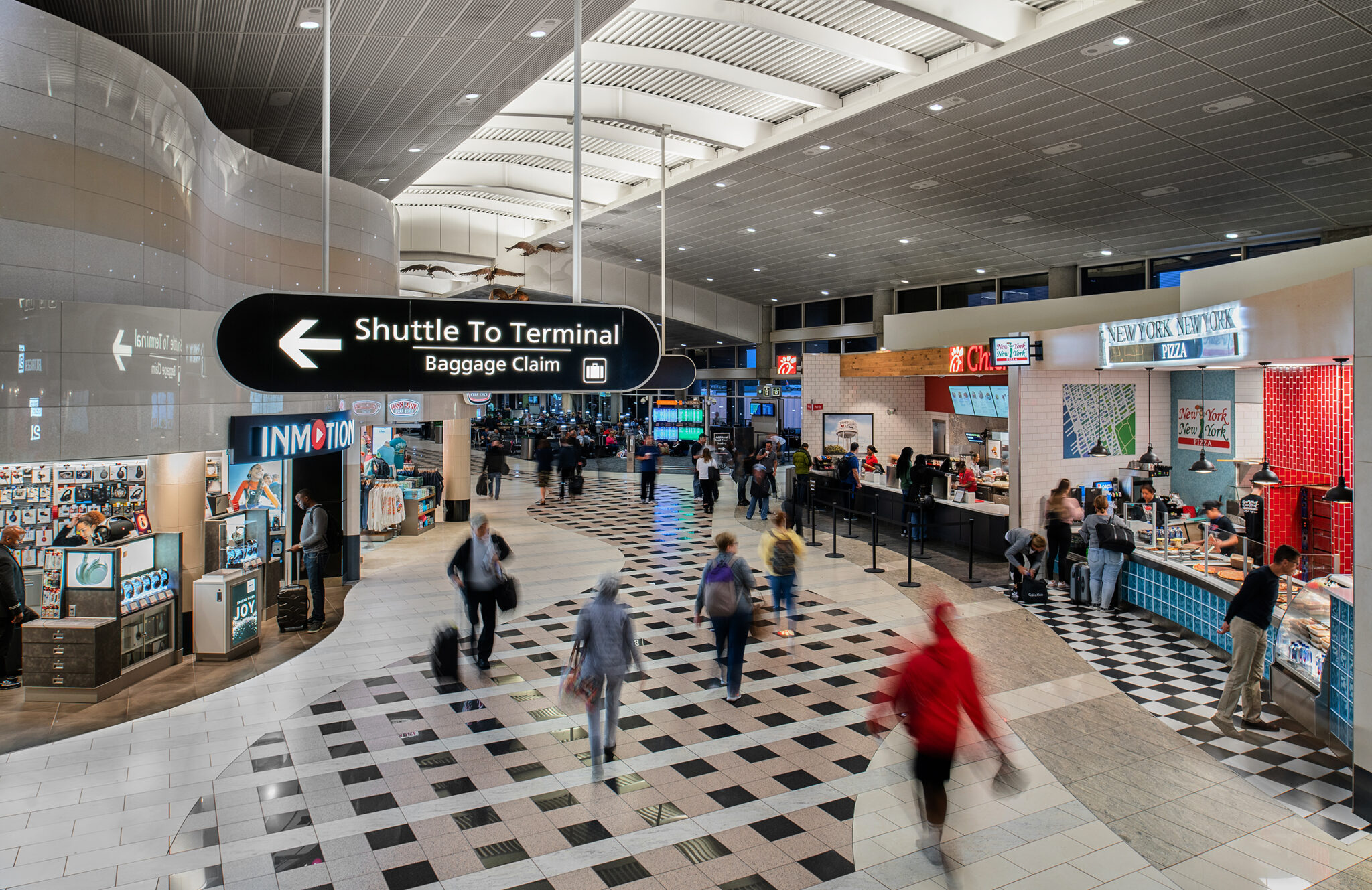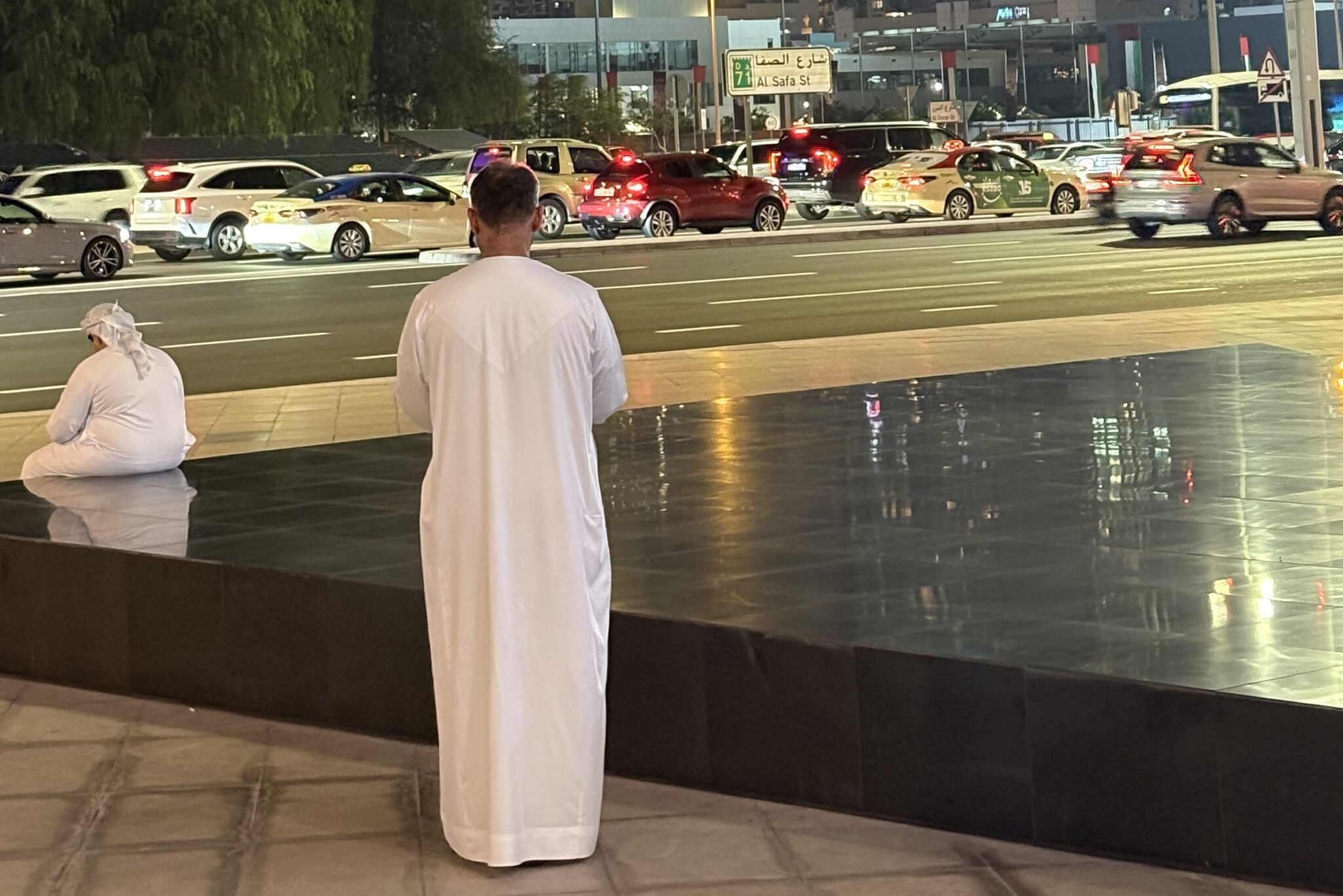Priestmangoode Unveils Its New Interior Designs for Embraer's Commercial Jets

Skift Take
- Staggered seating in first class.
- New coach class design.
- Nigel Goode, Paul Priestman, and Luke Hawes.
The new single aisle cabin design of Embraer's E2 Commercial Jets was unveiled at the Farnborough Air Show, designed by the world-renowned design studio Priestmangoode, London.
The firm of Priestmangoode won The Queen's Award for Enterprise in International Trade 2014, the Travel + Leisure Design Award 2014, and is the design firm responsible for a number of new aircraft cabins on leading international airlines; including attractive new cabins for Thai Airways and South African Airways and the captivating La Prémiére cabin for Air France.
Brazil-based aircraft manufacturer Embraer has invested in making its E2 commercial E-Jets competitive by featuring state-of-the-art engines, new aerodynamically advanced wings, full fly-by-wire flight controls, and other systems evolutions. It claims these features will result in double-digit improvements in fuel burn and reduced maintenance costs, emissions and external noise. This new cabin design completes and complements those technical features by enhancing the passenger experience.
The feature-rich design by Priestmangoode offers a clean, contemporary cabin, while making maintenance easier and more efficient for airlines and leasing companies. The project covered a reimagining of the complete passenger cabin; from sidewall panels to ceiling panels, overhead bins, cabin lighting, IFE, First Class and Economy passenger seating, galley and lavatory, even the Passenger Service Unit (PSU) and oxygen masks.
Priestmangoode stated that its team focused on increasing personal space for passengers in the unique seat designs and overhead bins and by installing the patent-pending PSU, which opens up overhead space for the passenger seated. It allows passengers to control the light and air conditioning of their seat without disturbing the passenger next to them. The internal windows of the cabin were "designed to appear larger, creating a greater feeling of space."
Embraer E2 1080p Low from Priestmangoode on Vimeo.
Priestmangoode and Embraer also maximized the space available in the overhead bin, without reducing cabin space by integrating seamlessly with the ceiling; for what design firm describes as "a cleaner, more spacious looking cabin as you enter the aircraft." Each passenger can fit a standard piece of wheeled carry-on luggage in the overhead bins in First Class. There are no legs between the seats, which allows passengers to fit large items under the seat in front of them, further enhancing the carry-on capacity of the aircraft.
The cabin can be configured as three-class with Economy, Economy Plus, and two different design options for First Class.
Priestmangoode has designed a new staggered First Class seat for the aircraft, with all the features of a traditional First Class seat, but integrated into the cabin without requiring a change to the bin configuration between classes, and using the same seat tracks to secure the seats to the cabin floor in First as in Economy. This allows airlines to choose alternate cabin configurations. It also reduces the overall weight of the cabin and simplifies maintenance.
The economy class seat is designed as wide as 18.5" on up to 36" pitch--with an upper literature pocket which can accommodate either a slot for passengers' tablet devices or a larger IFE monitor. The economy seats also include drop-down footrests.
The firm applied a more modern design to the lavatories, with a look inspired by contemporary hotels. The design also considers the needs of limited-mobility passengers onboard; by including acoustic curtains which give passengers with reduced mobility greater privacy, and integrated hand-rails in the walls. The lavatory mirror was pushed back to maximize space and improve hygiene.
Priestmangoode incorporated unique-to-Embraer design details such as new bin handles, galley latches and bathroom fittings. These bespoke items create a unified design feel throughout the aircraft.
This is the latest project in a long-standing relationship between Priestmangoode and Embraer, which includes the design for the Embraer Lineage 1000 executive jet interior.
Paul Priestman said of the project: "We have a long standing relationship with Embraer, and this project has cemented a fruitful partnership between our companies. Embraer is continuously investing in its fleet, research and development and shows great design leadership, and commitment to the passenger experience and long term sustainability."
Priestmangoode worked with Embraer's in-house engineering team to achieve a cabin design which would clearly differentiate Embraer from its competitors in narrow body aircraft. Embraer wants to offer its customers a competitive product to maintain its lead in the 70 to 130-seat market. There are currently 1,000 E-Jets in service with 65 customers from 45 countries.







